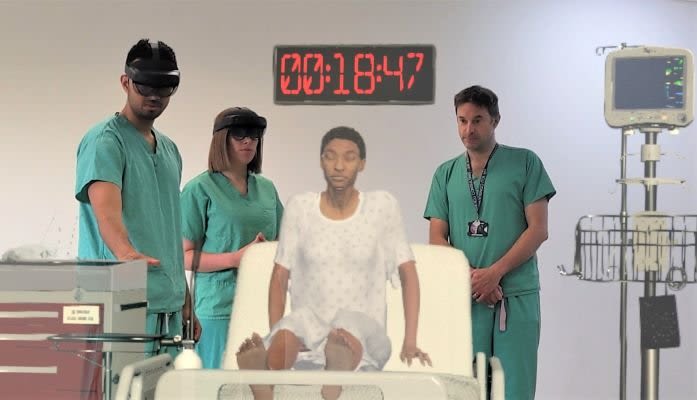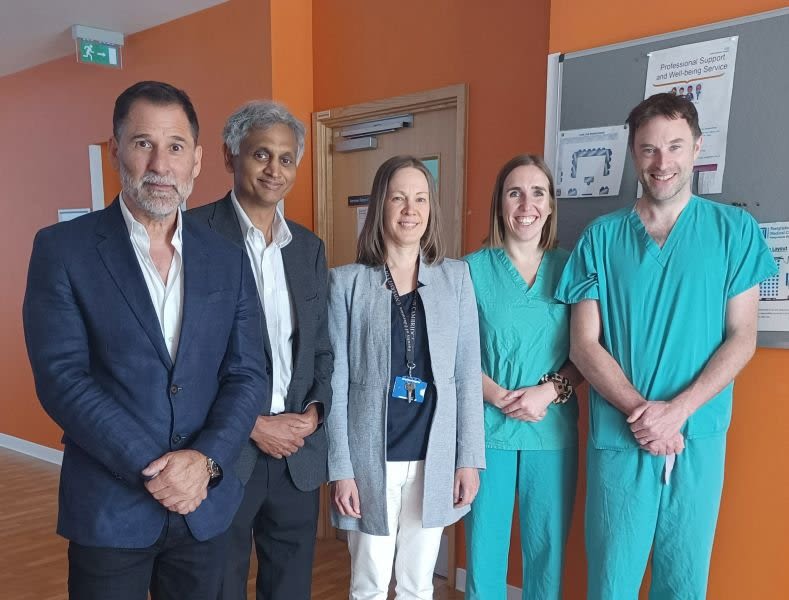

Faculty-supported work on ‘hologram patients’ named as one of the best inventions of 2022
A new approach to medical training which involves expert contributions from members of the Faculty of Education has been included in Time Magazine’s 200 Best Inventions of 2022.

“HoloScenarios”, which uses mixed reality to train medical students using holographic patients, was created through a partnership between Cambridge University Hospitals NHS Foundation Trust, the University of Cambridge and the Los Angeles-based tech company GigXR. Professor Riikka Hofmann and Dr Ruby Woodward, from the Faculty of Education, have led the analysis of the technology as a teaching and learning resource.
It has now been recognised in the medical care category of the Time Magazine awards, which describes it as one of the “groundbreaking inventions” which “are making the world better, smarter, and even a bit more fun”.
The technology enables world-class teaching and learning through life-like holographic patient scenarios, accessible anywhere in the world.
"Simulation is a vital component of medical education, and one where advancements in technology can democratise top-tier training for learners around the globe"
Learners, whether they are in the same room or somewhere else, put on a Microsoft HoloLens mixed reality headset, or access the system using an iOS or Android mobile device. They can then see each other in real life, while interacting with a multi-layered, medically accurate holographic patient.
This creates a unique environment in which to learn and practise vital, real-time decision-making and treatment choices. Through the same type of headset, medical instructors can change patient responses, introduce complications and record observations and discussions, whether in-person, in a teaching group, or remotely.

CUH consultant in neurosciences and trauma intensive care and anesthesiology, Dr Arun Gupta, who led the project in Cambridge, said: “Simulation is a vital component of medical education, and one where advancements in technology can democratise top-tier training for learners around the globe.”
As a commercial venture with GigXR, the technology is available for license to other institutions and medical training schools. If successful, some of the revenue from sales will go back into the NHS.
This article is adapted from an earlier story on the CUH website. Read more about the research in this earlier story from the Faculty of Education news pages.
Images in this story (top to bottom):
Junior doctor Aniket Bharadwaj with trainers Dr Ruby Woodard and Dr Jonny Martin, diagnosing a hologram patient.
The team behind HoloScenarios. From left to right: David King Lasser, Dr Arun Gupta, Prof Riikka Hofmann, Dr Ruby Woodward and Dr Jonny Martin
Both images credit CUH/HoloScenarios